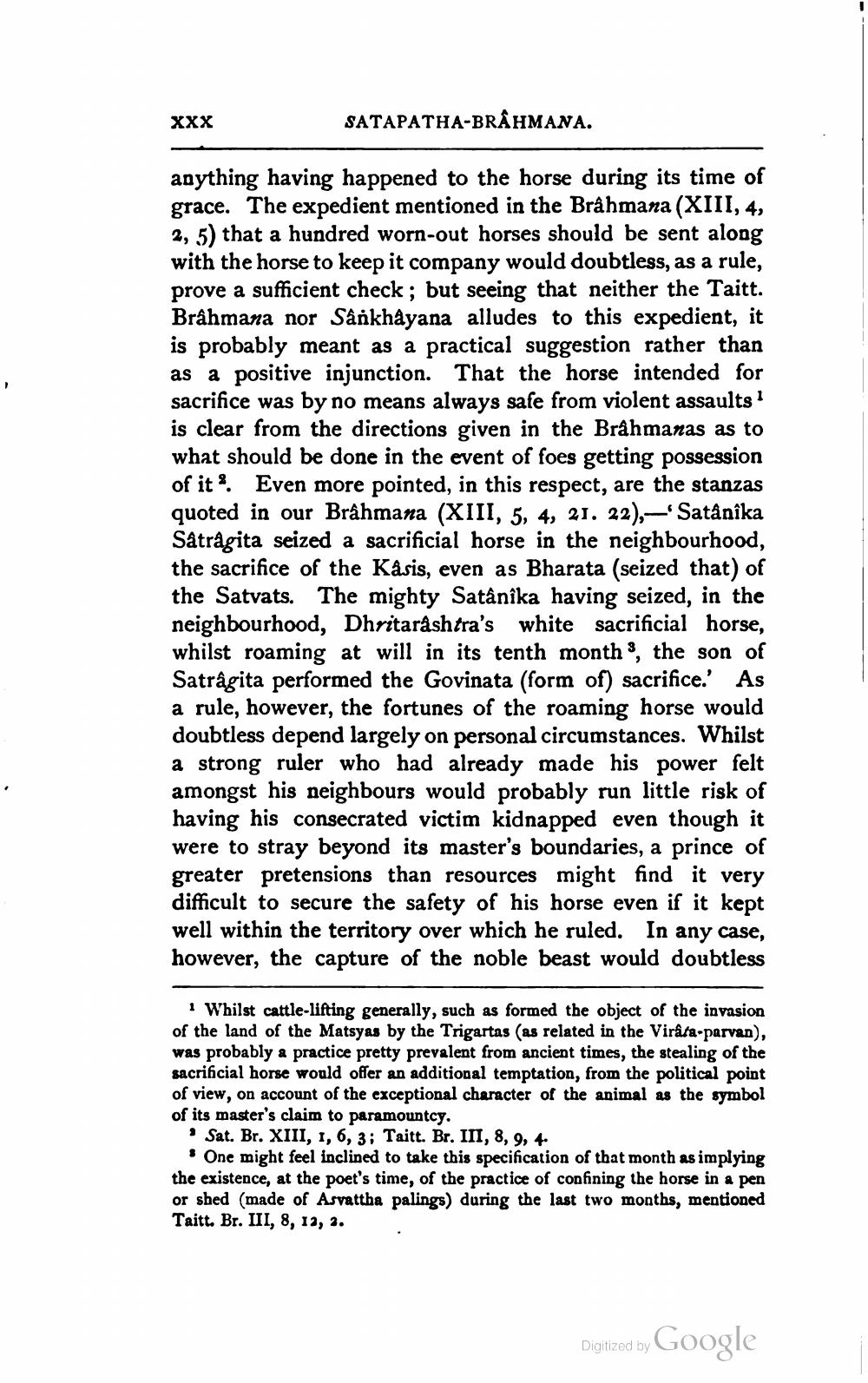________________
"
SATAPATHA-BRAHMANA.
anything having happened to the horse during its time of grace. The expedient mentioned in the Brahmana (XIII, 4, 2, 5) that a hundred worn-out horses should be sent along with the horse to keep it company would doubtless, as a rule, prove a sufficient check; but seeing that neither the Taitt. Brahmana nor Sânkhâyana alludes to this expedient, it is probably meant as a practical suggestion rather than as a positive injunction. That the horse intended for sacrifice was by no means always safe from violent assaults 1 is clear from the directions given in the Brahmanas as to what should be done in the event of foes getting possession of it. Even more pointed, in this respect, are the stanzas quoted in our Brâhmana (XIII, 5, 4, 21. 22),—'Satânîka Sâtrâgita seized a sacrificial horse in the neighbourhood, the sacrifice of the Kâsis, even as Bharata (seized that) of the Satvats. The mighty Satânîka having seized, in the neighbourhood, Dhritarashtra's white sacrificial horse, whilst roaming at will in its tenth month, the son of Satrâgita performed the Govinata (form of) sacrifice.' As a rule, however, the fortunes of the roaming horse would doubtless depend largely on personal circumstances. Whilst a strong ruler who had already made his power felt amongst his neighbours would probably run little risk of having his consecrated victim kidnapped even though it were to stray beyond its master's boundaries, a prince of greater pretensions than resources might find it very difficult to secure the safety of his horse even if it kept well within the territory over which he ruled. In any case, however, the capture of the noble beast would doubtless
XXX
1 Whilst cattle-lifting generally, such as formed the object of the invasion of the land of the Matsyas by the Trigartas (as related in the Virâta-parvan), was probably a practice pretty prevalent from ancient times, the stealing of the sacrificial horse would offer an additional temptation, from the political point of view, on account of the exceptional character of the animal as the symbol of its master's claim to paramountcy.
Sat. Br. XIII, 1, 6, 3; Taitt. Br. III, 8, 9, 4.
One might feel inclined to take this specification of that month as implying the existence, at the poet's time, of the practice of confining the horse in a pen or shed (made of Asvattha palings) during the last two months, mentioned Taitt. Br. III, 8, 12, 2.
Digitized by
Google




